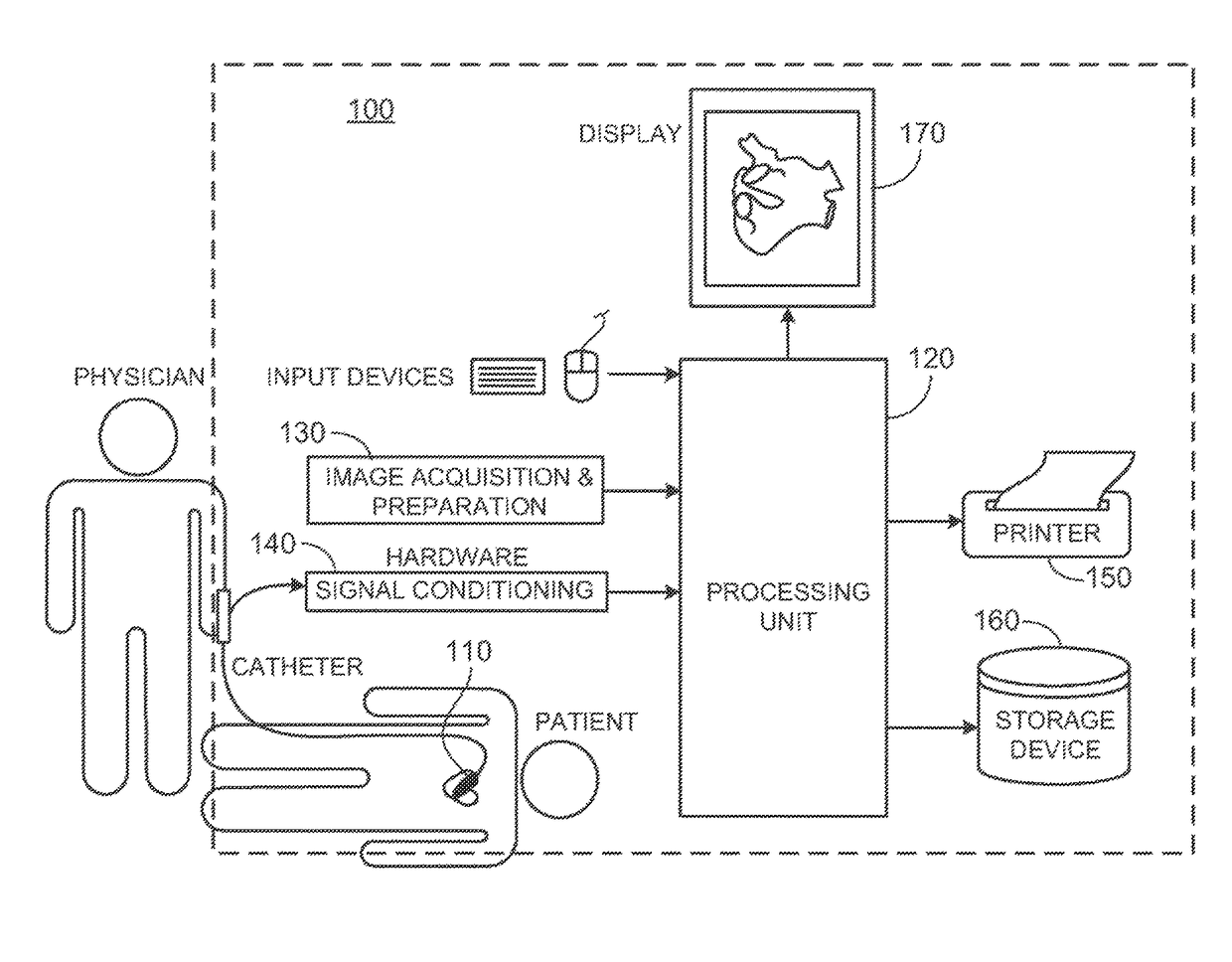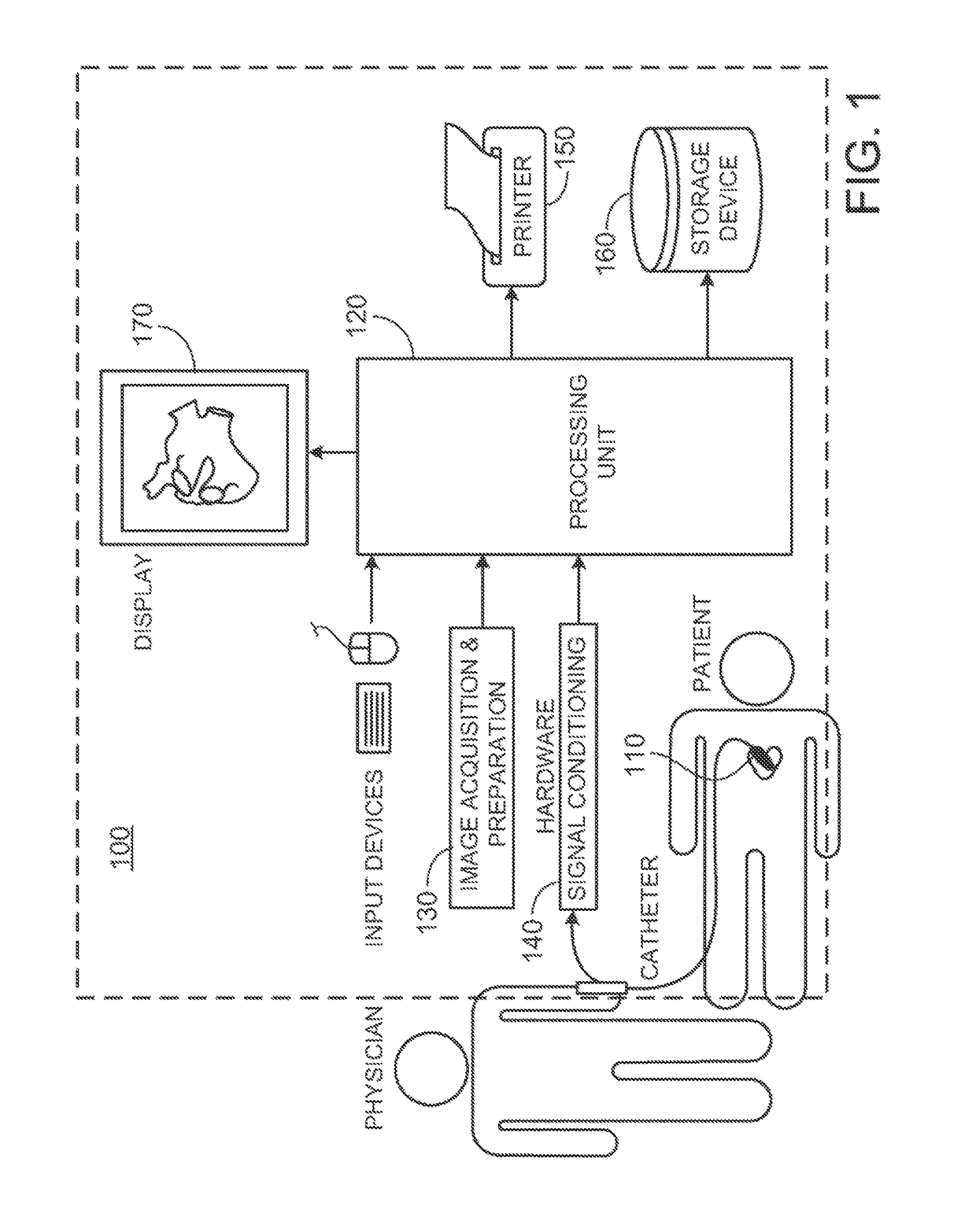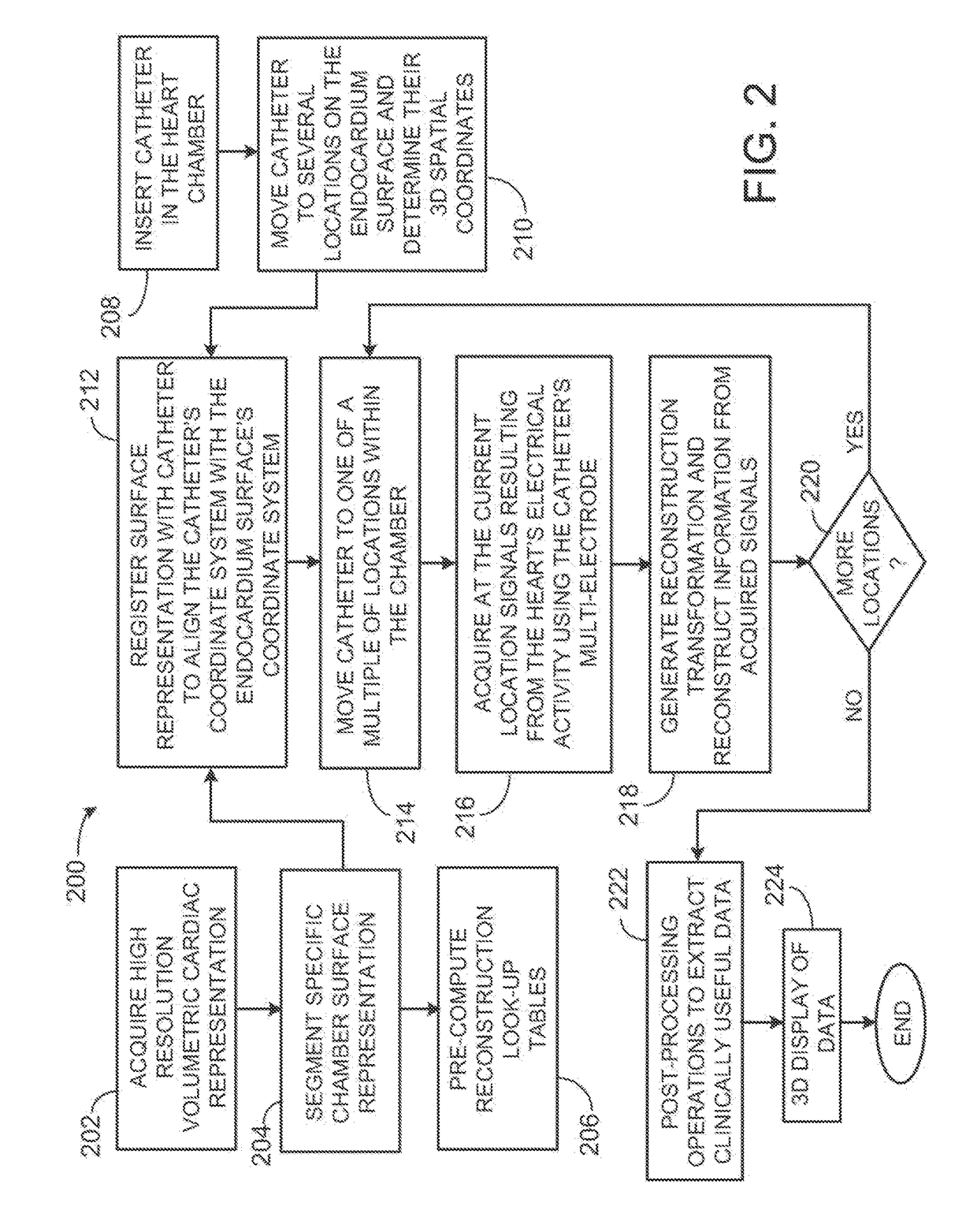Cardiac mapping
a technology for mapping and heart valves, applied in the field of cardiac mapping, can solve the problems of time-consuming contact-based mapping techniques, affecting the accuracy of endocardium,
- Summary
- Abstract
- Description
- Claims
- Application Information
AI Technical Summary
Benefits of technology
Problems solved by technology
Method used
Image
Examples
Embodiment Construction
Overview
[0084]Disclosed herein is a system and method for non-contact mapping and presentation of physiological information in relation to an endocardium surface of a heart chamber. In certain embodiments, the non-contact mapping system uses a movable multi-electrode catheter that is displaced to multiple locations within the heart chamber, thereby improving the resolution and accuracy of data that can be acquired by a single catheter. Transformation functions are computed prior to the commencement of signal measurement and acquisition of raw data to expedite the reconstruction process to assemble the physiological information provided to a user.
[0085]FIG. 1 shows a schematic diagram of an exemplary embodiment of a non-contact system 100. The non-contact system 100 includes a moveable catheter 110 having multiple spatially distributed electrodes. During the signal acquisition stage of the non-contact mapping procedure the catheter 110 is displaced to multiple locations within the he...
PUM
 Login to View More
Login to View More Abstract
Description
Claims
Application Information
 Login to View More
Login to View More - R&D
- Intellectual Property
- Life Sciences
- Materials
- Tech Scout
- Unparalleled Data Quality
- Higher Quality Content
- 60% Fewer Hallucinations
Browse by: Latest US Patents, China's latest patents, Technical Efficacy Thesaurus, Application Domain, Technology Topic, Popular Technical Reports.
© 2025 PatSnap. All rights reserved.Legal|Privacy policy|Modern Slavery Act Transparency Statement|Sitemap|About US| Contact US: help@patsnap.com



